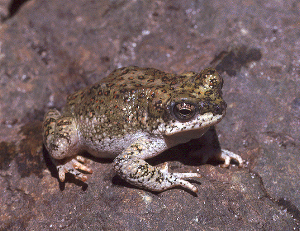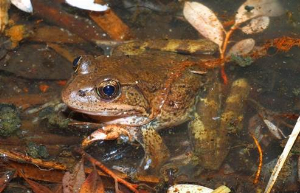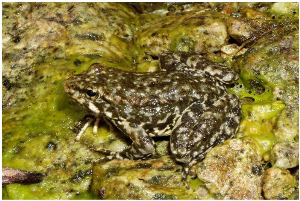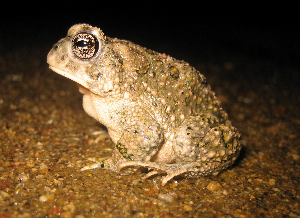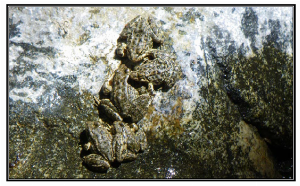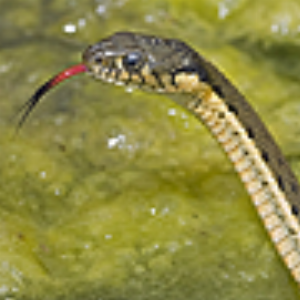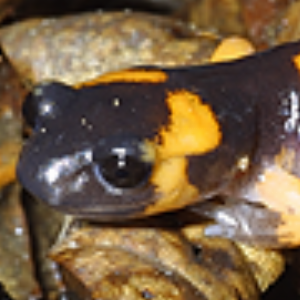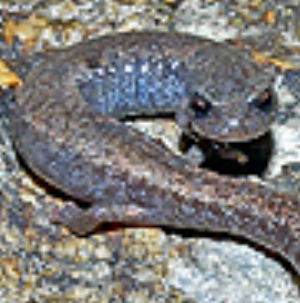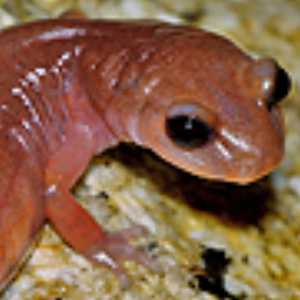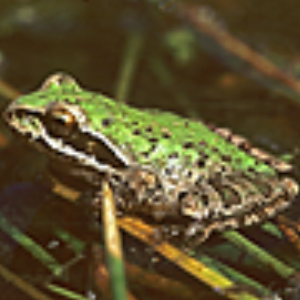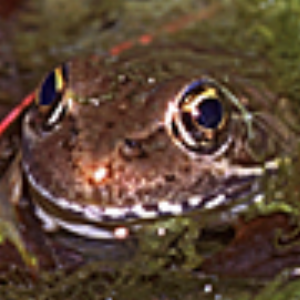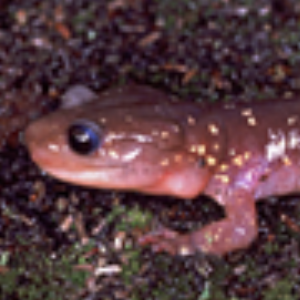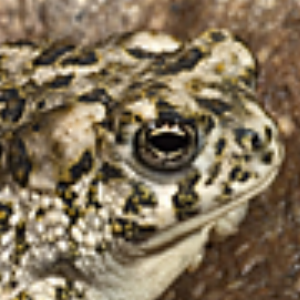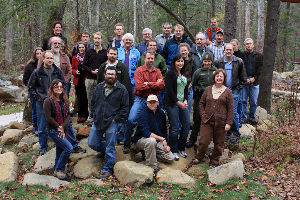Search ARMI Database
Search term(s)
Contribution Number
Search Results
106 record(s) found.
Papers & Reports Comparative phylogeography reveals deep lineages and regional evolutionary hotspots in the Mojave and Sonoran Deserts
Authors: D A Wood; A G Vandergast; Kelly R Barr; R D Inman; T C Esque; K E Nussear; Robert N Fisher
Date: 2012 | Outlet: Diversity and Distributions 19:722-737
Aim We explored lineage diversification within desert-dwelling fauna. Our goals were (1) to determine whether phylogenetic lineages and population expansions were consistent with younger Pleistocene climate fluctuation hypotheses or much older events predicted by pre-Pleistocene vicariance hypotheses, (2) to assess concordance in spatial patterns of genetic divergence and diversity among species and (3) to identify regional evolutionary hotspots of divergence and diversity and assess their conservation status.
Location Mojave, Colorado, and Sonoran Deserts, USA.
Methods We analysed previously published gene sequence data for twelve species. We used Bayesian gene tree methods to estimate lineages and divergence times. Within each lineage, we tested for population expansion and age of expansion using coalescent approaches. We mapped interpopulation genetic divergence and intra-population genetic diversity in a GIS to identify hotspots of highest genetic divergence and diversity and to assess whether protected lands overlapped with evolutionary hotspots.
Results In seven of the 12 species, lineage divergence substantially predated the Pleistocene. Historical population expansion was found in eight species, but expansion events postdated the Last Glacial Maximum (LGM) in only four. For all species assessed, six hotspots of high genetic divergence and diversity were concentrated in the Colorado Desert, along the Colorado River and in the Mojave/Sonoran ecotone. At least some proportion of the land within each recovered hotspot was categorized as protected, yet four of the six also overlapped with major areas of human development.
Main conclusions Most of the species studied here diversified into distinct Mojave and Sonoran lineages prior to the LGM – supporting older diversification hypotheses. Several evolutionary hotspots were recovered but are not strategically paired with areas of protected land. Long-term preservation of species-level biodiversity would entail selecting areas for protection in Mojave and Sonoran Deserts to retain divergent genetic diversity and ensure connectedness across environmental gradients.
Location Mojave, Colorado, and Sonoran Deserts, USA.
Methods We analysed previously published gene sequence data for twelve species. We used Bayesian gene tree methods to estimate lineages and divergence times. Within each lineage, we tested for population expansion and age of expansion using coalescent approaches. We mapped interpopulation genetic divergence and intra-population genetic diversity in a GIS to identify hotspots of highest genetic divergence and diversity and to assess whether protected lands overlapped with evolutionary hotspots.
Results In seven of the 12 species, lineage divergence substantially predated the Pleistocene. Historical population expansion was found in eight species, but expansion events postdated the Last Glacial Maximum (LGM) in only four. For all species assessed, six hotspots of high genetic divergence and diversity were concentrated in the Colorado Desert, along the Colorado River and in the Mojave/Sonoran ecotone. At least some proportion of the land within each recovered hotspot was categorized as protected, yet four of the six also overlapped with major areas of human development.
Main conclusions Most of the species studied here diversified into distinct Mojave and Sonoran lineages prior to the LGM – supporting older diversification hypotheses. Several evolutionary hotspots were recovered but are not strategically paired with areas of protected land. Long-term preservation of species-level biodiversity would entail selecting areas for protection in Mojave and Sonoran Deserts to retain divergent genetic diversity and ensure connectedness across environmental gradients.
Papers & Reports Effects of natural flooding and trapping on the facilitation of invasive crayfish-native amphibian coexistence in a semi-arid perennial stream.
Authors: Lee B Kats; Gary Bucciarelli; Thomas L Vandergon; R L Honeycutt; E Mattiasen; A Sanders; Seth PD Riley; Jacob L Kerby; Robert N Fisher
Date: 2013-09 | Outlet: Journal of Arid Environments 98:109-112
Aquatic amphibians are known to be vulnerable to a myriad of invasive predators. Invasive crayfish are thought to have eliminated native populations of amphibians in some streams in the semi-arid Santa Monica Mountains of southern California. Despite their toxic skin secretions that defend them from native predators, newts are vulnerable to crayfish attacks, and crayfish have been observed attacking adult newts, eating newt egg masses and larvae. For 15 years we have observed invasive crayfish and native California newts coexisting in one stream in the Santa Monica Mountains. During that period we monitored the densities of both crayfish and newt egg mass densities and compared these to annual rainfall totals. After three seasons of below average rainfall, we reduced crayfish numbers by manual trapping. Our long-term data suggest that crayfish do not fare well in years when rainfall is above the historic average. This invasive predator did not evolve with high velocity streams and observations suggest southern California storm events wash crayfish downstream, killing many of them. Newts exhibit increased reproduction in years when crayfish numbers are reduced. A comparison with a nearby stream that does not contain crayfish suggests that newt reproduction positively responds to increased rainfall, but that fluctuations are much greater in the stream that contains crayfish. We suggest that rainfall patterns help explain invasive crayfish/newt coexistence and that management for future coexistence may benefit from manual trapping.
Papers & Reports Trends in amphibian occupancy in the United States
Authors: Michael J Adams; David AW Miller; Erin Muths; P. Stephen Corn; Evan HC Grant; Larissa L Bailey; Gary M Fellers; Robert N Fisher; Walt J Sadinski; Hardin J Waddle; Susan C Walls
Date: 2013-05-22 | Outlet: PLoS ONE 8(5):e64347
Though a third of amphibian species worldwide are thought to be imperiled, existing assessments simply categorize extinction risk, providing little information on the rate of population losses. We conducted the first analysis of the rate of change in the probability that amphibians occupy ponds and other comparable habitat features across the United States. We found that overall occupancy by amphibians declined 3.7% annually from 2002 to 2011. Species that are Red-listed by the International Union for Conservation of Nature (IUCN) declined an average of 11.6% annually. All subsets of data examined had a declining trend including species in the IUCN Least Concern category. This analysis suggests that amphibian declines may be more widespread and severe than previously realized.
Papers & Reports Evolutionary dynamics of a rapidly receding southern range boundary in the threatened California Red-Legged Frog (Rana draytonii)
Authors: Jonathan Q Richmond; Kelly R Barr; Adam R Backlin; A G Vandergast; Robert N Fisher
Date: 2013-02 | Outlet: Evolutionary Applications doi:10.1111/eva.12067
Populations forming the edge of a species range are often imperiled by isolation and low genetic diversity, with proximity to human population centers being a major determinant of edge stability in modern landscapes. Since the 1960s, the California red-legged frog (Rana draytonii) has undergone extensive declines in urban-plagued southern California, where the range edge has rapidly contracted northward while shifting its cardinal orientation to an east-west trending axis. We studied the genetic structure and diversity of these front-line populations, tested for signatures of contemporary disturbance, specifically fire, and attempted to disentangle these signals from demographic events extending deeper into the past. Consistent with the genetic expectations of the ‘abundant-center’ model, we found that diversity, admixture and opportunity for random mating increases in populations sampled successively further away from the range boundary. Demographic simulations indicate that bottlenecks in peripheral isolates are associated with processes extending tens to a few hundred generations in the past, despite the demographic collapse of some populations due to recent fire-flood events. While the effects of recent disturbance have left little genetic imprint on these populations, they likely contribute to an extinction debt that will lead to continued range contraction unless management intervenes to stall or reverse the process.
Papers & Reports The precarious persistence of the endangered Sierra Madre yellow-legged frog (Rana muscosa) in southern California
Authors: Adam R Backlin; C J Hitchcock; Elizabeth A Gallegos; J L Yee; Robert N Fisher
Date: 2013 | Outlet: Oryx - International Journal of Conservation (in press)
We conducted surveys for the endangered Sierra Madre yellow-legged frog (Rana muscosa) throughout southern California to evaluate their current distribution and status. Surveys were conducted between 2000 and 2009 at 150 unique streams and lakes within the San Gabriel, San Bernardino, San Jacinto, and Palomar mountains of southern California. Of the 150 survey locations only nine small, geographically isolated, populations were detected across the four mountain ranges. The nine R. muscosa populations all tested positive for the amphibian chytrid fungus (Batrachochytrium dendrobatidis). Our data show that when R. muscosa is known to be present, it is highly detectable (89%) from a single visit during the frogs active season. We estimate there were only 166 adult frogs that remained in the wild in 2009. From our research, it appears that R. muscosa populations in southern California are extremely vulnerable to natural and stochastic events and may become extirpated in the near future without intervention.
Papers & Reports Joint estimation of habitat dynamics and species interactions: disturbance reduces co-occurrence of non-native predators with an endangered toad.
Authors: David AW Miller; Cheryl S Brehme; J E Hines; J D Nichols; Robert N Fisher
Date: 2012-11-01 | Outlet: Journal of Animal Ecology 81:1288-1297
1. Ecologists have long been interested in the processes that determine patterns of species occurrence and co-occurrence. Short-comings of many existing empirical approaches for these questions include a reliance on patterns of occurrence at a single time point, failure to properly account for imperfect detection, and treating the environment as a static variable. <br />
2. We fit detection and non-detection data collected from repeat visits using a dynamic site occupancy model that simultaneously accounts for the temporal dynamics of a focal prey species, its predators, and its habitat. Our objective was to determine how disturbance and species interactions affect the co-occurrence probabilities of an endangered toad and recently introduced non-native predators in stream breeding habitats. To do this we determined support for alternative processes that could affect co-occurrence frequency in the system. <br />
3. Co-occurrence probabilities of toads with non-native predators in high-disturbance ephemeral streams and low-disturbance perennial streams were directly related to the differences disturbance regimes in each of the stream types. If predators were established at a site, they were rarely lost from the site except in cases when the site dried out. Once a dry site became suitable again, toads colonized them much more rapidly than predators, creating a period of predator-free space.<br />
4. We attribute the dynamics to a ‘storage effect’ where toads persisting outside of the stream environment during periods of drought rapidly colonized sites when they become suitable again. Our results demonstrate that, even in a highly connected stream network, temporal disturbance can structure frequencies with which breeding amphibians encounter non-native predators.<br />
5. Dynamic site occupancy models are a powerful tool for quantifying inter-species and species-habitat interactions. In contrast to previous methods that infer dynamic processes based on static patterns in occupancy, the approach we take allows the dynamic processes that determine species-species and species-habitat interactions to be directly estimated.
2. We fit detection and non-detection data collected from repeat visits using a dynamic site occupancy model that simultaneously accounts for the temporal dynamics of a focal prey species, its predators, and its habitat. Our objective was to determine how disturbance and species interactions affect the co-occurrence probabilities of an endangered toad and recently introduced non-native predators in stream breeding habitats. To do this we determined support for alternative processes that could affect co-occurrence frequency in the system. <br />
3. Co-occurrence probabilities of toads with non-native predators in high-disturbance ephemeral streams and low-disturbance perennial streams were directly related to the differences disturbance regimes in each of the stream types. If predators were established at a site, they were rarely lost from the site except in cases when the site dried out. Once a dry site became suitable again, toads colonized them much more rapidly than predators, creating a period of predator-free space.<br />
4. We attribute the dynamics to a ‘storage effect’ where toads persisting outside of the stream environment during periods of drought rapidly colonized sites when they become suitable again. Our results demonstrate that, even in a highly connected stream network, temporal disturbance can structure frequencies with which breeding amphibians encounter non-native predators.<br />
5. Dynamic site occupancy models are a powerful tool for quantifying inter-species and species-habitat interactions. In contrast to previous methods that infer dynamic processes based on static patterns in occupancy, the approach we take allows the dynamic processes that determine species-species and species-habitat interactions to be directly estimated.
Papers & Reports Conservation genetics of evolutionary lineages of the endangered mountain yellow-legged frog, Rana muscosa (Amphibia: Ranidae), in southern California
Authors: S D Schoville; T S Tustall; V T Vredenburg; Adam R Backlin; Elizabeth A Gallegos; D A Wood; Robert N Fisher
Date: 2011-05 | Outlet: Biological Conservation 144:2031-2040
Severe population declines led to the listing of southern California Rana muscosa (Ranidae) as endangered in 2002. Nine small populations inhabit watersheds in three isolated mountain ranges, the San Gabriel, San Bernardino and San Jacinto. One population from the Dark Canyon tributary in the San Jacinto Mountains has been used to establish a captive breeding population at the San Diego Zoo Institute for Conservation Research. Because these populations may still be declining, it is critical to gather information on how genetic variation is structured in these populations and what historical inter-population connectivity existed between populations. Additionally, it is not clear whether these populations are rapidly losing genetic diversity due to population bottlenecks. Using mitochondrial and microsatellite data, we examine patterns of genetic variation in southern California and one of the last remaining populations of R. muscosa in the southern Sierra Nevada. We find low levels of genetic variation within each population and evidence of genetic bottlenecks. Additionally, substantial population structure is evident, suggesting a high degree of historical isolation within and between mountain ranges. Based on estimates from a multi-population isolation with migration analysis, these populations diversified during glacial episodes of the Pleistocene, with little gene flow during population divergence. Our data demonstrate that unique evolutionary lineages of R. muscosa occupy each mountain range in southern California and should be managed separately. The captive breeding program at Dark Canyon is promising, although mitigating the loss of neutral genetic diversity relative to the natural population might require additional breeding frogs.
Papers & Reports Habitat Use and Movement of the Endangered Arroyo Toad (Anaxyrus californicus) in Coastal Southern California
Authors: M J Mitrovich; Elizabeth A Gallegos; L M Lyren; Robert E Lovich; Robert N Fisher
Date: 2011 | Outlet: Journal of Herpetology 45: 9-12
Information on the habitat use and movement patterns of Arroyo Toads (Anaxyrus californicus) is limited. The temporal and spatial characteristics of terrestrial habitat use, especially as it relates to upland use in coastal areas of the species’ range, are poorly understood. We present analyses of radio-telemetry data from 40 individual adult toads tracked at a single site in coastal southern California from March through November of 2004. We quantify adult Arroyo Toad habitat use and movements and interpret results in the context of their life history. We show concentrated activity by both male and female toads along stream terraces during and after breeding, and, although our fall sample size is low, the continued presence of adult toads in the floodplain through the late-fall. Adult toads used open sandy flats with sparse vegetation. Home range size and movement frequency varied as a function of body mass. Observed spatial patterns of movement and habitat use both during and outside of the breeding period as well as available climatological data suggests overwintering of toads in floodplain habitats of near-coastal areas of southern California may be more common than previously considered. If adult toads are not migrating out of the floodplain at the close of the breeding season but instead overwinter on stream terraces in near-coastal areas, then current management practices that assume toad absence from floodplain habitats may be leaving adult toads over-wintering on stream terraces vulnerable to human disturbance during a time of year when Arroyo Toad mortality is potentially highest.
Papers & Reports Snake (colubridae: Thamnophis) predatory responses to chemical cues from native and introduced prey species
Authors: S J Mullin; H Imbert; J M Fish; Edward L Ervin; Robert N Fisher
Date: 2004 | Outlet: Southwestern Naturalist 49: 449-456
Papers & Reports Surface-dwelling and subterranean invertebrate fauna associated with giant reed (Arundo donax Poaceae) in southern California
Authors: J Lovich; Edward L Ervin; Robert N Fisher
Date: 2009 | Outlet: Southern California Academy of Sciences 108: 29-35
Papers & Reports Herpetological Monitoring Using a Pitfall Trapping Design in Southern California
Authors: Robert N Fisher; D C Stokes; Carlton J Rochester; Cheryl S Brehme; Stacie A Hathaway; T J Case
Date: 2008 | Outlet: USGS Open File Report
Papers & Reports Are hotspots of evolutionary potential adequately protected in southern California?
Authors: A G Vandergast; Stacie A Hathaway; Robert N Fisher; Joshua A Boys; Andrew J Bohonak
Date: 2008 | Outlet: Biological Conservation 141: 1648–1664.
Papers & Reports Reptile and amphibian responses to large-scale wildfires in Southern California
Authors: Carlton J Rochester; Cheryl S Brehme; D R Clark; D S Stokes; Stacie A Hathaway; Robert N Fisher
Date: 2010 | Outlet: Journal of Herpetology 44:333-351
In 2003, southern California experienced several large fires that burned thousands of hectares of wildlife habitats and conserved lands. To investigate the effects of these fires on the reptile and
amphibian communities, we compared the results from prefire herpetofauna and vegetation sampling to two years of postfire sampling across 38 burned and 17 unburned plots. The sampling plots were spread over four vegetation types and four open space areas within San Diego County. Our capture results indicated that burned chaparral and coastal sage scrub plots lost herpetofaunal species diversity after the fires and displayed a significant shift in overall community structure. Shrub and tree cover at the burned plots, averaged across the second and third postfire years, had decreased by 53% in chaparral and 75% in coastal sage scrub. Additionally, postfire herpetofauna community structure at burned plots was more similar to that found in unburned grasslands. In grassland and woodland/riparian vegetation plots, where shrub and tree cover was not significantly affected by fires, we found no differences in the herpetofaunal species diversity or community composition. At the individual species level, Sceloporus occidentalis was the most abundant reptile in these areas both before and after the fires. We saw increases in the net capture rates for several lizard species, including Aspidoscelis tigris, Phrynosoma coronatum, and Uta stansburiana in burned chaparral plots and Aspidoscelis hyperythra and U. stansburiana in burned coastal sage scrub plots. The toad, Bufo boreas, was detected at significantly fewer burned plots in chaparral after the fires. Additionally, we documented decreases in the number of plots occupied by lizards (Elgaria multicarinata), salamanders(Batrachoseps major), and snakes (Coluber constrictor, Lampropeltis getula, Pituophis catenifer, andMasticophis lateralis) in coastal sage scrub and chaparral after the fires. We discuss the individual species results as they relate to such life-history traits as the susceptibility to initial mortality, the response to the altered postfire habitat, and shifts in the availability of potential prey. We foresee that a continued unnatural fire regime will result in a simplification of the southern California reptile and amphibian communities.
amphibian communities, we compared the results from prefire herpetofauna and vegetation sampling to two years of postfire sampling across 38 burned and 17 unburned plots. The sampling plots were spread over four vegetation types and four open space areas within San Diego County. Our capture results indicated that burned chaparral and coastal sage scrub plots lost herpetofaunal species diversity after the fires and displayed a significant shift in overall community structure. Shrub and tree cover at the burned plots, averaged across the second and third postfire years, had decreased by 53% in chaparral and 75% in coastal sage scrub. Additionally, postfire herpetofauna community structure at burned plots was more similar to that found in unburned grasslands. In grassland and woodland/riparian vegetation plots, where shrub and tree cover was not significantly affected by fires, we found no differences in the herpetofaunal species diversity or community composition. At the individual species level, Sceloporus occidentalis was the most abundant reptile in these areas both before and after the fires. We saw increases in the net capture rates for several lizard species, including Aspidoscelis tigris, Phrynosoma coronatum, and Uta stansburiana in burned chaparral plots and Aspidoscelis hyperythra and U. stansburiana in burned coastal sage scrub plots. The toad, Bufo boreas, was detected at significantly fewer burned plots in chaparral after the fires. Additionally, we documented decreases in the number of plots occupied by lizards (Elgaria multicarinata), salamanders(Batrachoseps major), and snakes (Coluber constrictor, Lampropeltis getula, Pituophis catenifer, andMasticophis lateralis) in coastal sage scrub and chaparral after the fires. We discuss the individual species results as they relate to such life-history traits as the susceptibility to initial mortality, the response to the altered postfire habitat, and shifts in the availability of potential prey. We foresee that a continued unnatural fire regime will result in a simplification of the southern California reptile and amphibian communities.
Papers & Reports Developing terrestrial, multi-taxon indices of biological integrity: an example from coastal sage scrub
Authors: J Diffendorfer; G M Fleming; Duggan; R E Chapman; M E Rahn; M J Mitrovich; Robert N Fisher
Date: 2007 | Outlet: Biological Conservation 140: 130-141
Papers & Reports Effect of species rarity on the accuracy of species distribution models for reptiles and amphibians in southern California
Authors: J Franklin; K E Wejnert; Stacie A Hathaway; Carlton J Rochester; Robert N Fisher
Date: 2009 | Outlet: Diversity and Distributions 15: 167-177
Papers & Reports Effects of artificial night lighting on amphibians and reptiles in urban environments.
Authors: G Perry; Bryant W Buchanan; Robert N Fisher; M Salmon; S E Wise
Date: 2008 | Outlet: Urban Herpetology 239-256
Papers & Reports Thamnophis hammondii (Two-striped Garter Snake). Foraging Behavior
Authors: Edward L Ervin; Robert N Fisher
Date: 2007 | Outlet: Herpetological Review 38: 345-346
Papers & Reports Bufo californicus (Arroyo Toad). Mortality
Authors: Edward L Ervin; D A Kisner; Robert N Fisher
Date: 2006 | Outlet: Herpetological Review 37: 199
Papers & Reports Effects of urbanization on the distribution and abundance of amphibians and invasive species in southern California streams
Authors: Seth PD Riley; Gary T Busteed; Lee B Kats; Thomas L Vandergon; Lena FS Lee; Rosi G Dagit; Jacob L Kerby; Robert N Fisher; Raymond M Sauvajot
Date: 2005 | Outlet: Conservation Biology 19: 1894-1907
Papers & Reports The U.S. Department of Interior’s Amphibian Research and Monitoring Initiative: a successful start to a national program
Authors: Erin Muths; R E Jung; Larissa L Bailey; Michael J Adams; P. Stephen Corn; Kenneth C Dodd; Gary M Fellers; Walt J Sadinski; Cecil R Schwalbe; Susan C Walls; Robert N Fisher; A L Gallant; William A Battaglin; David E Green
Date: 2005 | Outlet: Applied Herpetology 2: 355–371
Most research to assess amphibian declines has focused on local-scale projects on one or a few species. The Amphibian Research and Monitoring Initiative (ARMI) is a national program in the United States mandated by congressional directive and implemented by the U.S. Department of the Interior (specifically the U.S. Geological Survey, USGS). Program goals are to monitor changes in populations of amphibians across U.S. Department of the Interior lands and to address research questions related to amphibian declines using a hierarchical framework of base-, mid- and apex-level monitoring sites. ARMI is currently monitoring 83 amphibian species (29% of species in the U.S.) at mid- and apex-level areas. We chart the progress of this 5-year-old program and provide an example of mid-level monitoring from 1 of the 7 ARMI regions.

